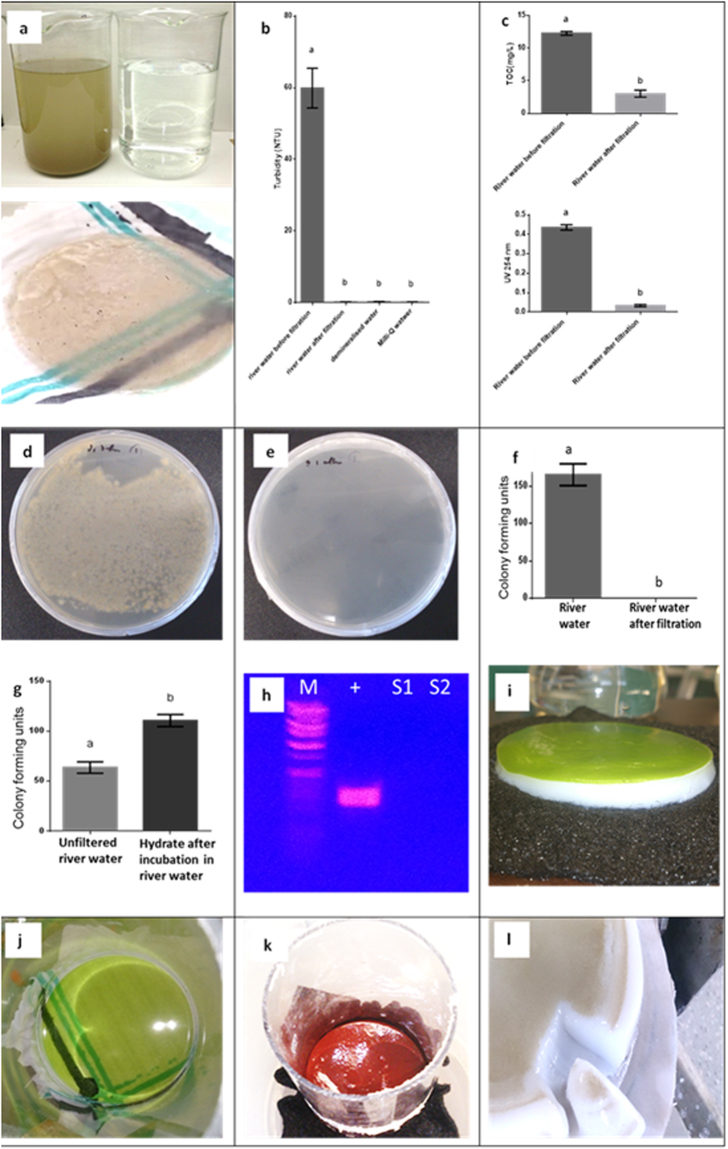Figure 3.
Various examples of hydrate filtration, including water quality and microbial contamination tests of Brisbane River water before and after hydrate filtration. (a). Turbid Brisbane River water before and after gravity-assisted hydrate filtration (top) and 3-fold autoclaved hydrate layer (bottom) used as filtration device (note the partial transparency that permits visibility of the holding fabric and increased flux rates). (b). After hydrate filtration, turbidity was significantly lower than river water before filtration [one-way ANOVA; p < 0.05] and showed no significant difference to demineralized water; NTU = Nephelometric Turbidity Units. (c). Significant decreases in total organic carbon (TOC; t-test; p < 0.05; top) and in UV 254 nm (Spectral Absorption Coefficient (SAC; t-test; p < 0.05; bottom) of river water after hydrate filtration. (d). LB plates with culturable bacteria from river water before filtration (average 2108 cfu/plate after 24 h of incubation; 5 plates were used). (e). LB plates from filtered river water after hydrate filtration (no bacterial colonies were found after 24 h of incubation). (f). Removal of bacteria by hydrate filtration. (g). Removal of bacteria by adsorption to aluminium hydroxide polyhydrate. (h). Detection of M13K07 Helper Phage DNA following hydrate filtration. M: wide-range DNA ladder (Takara). + : PCR-amplified phage DNA fragments (positive control); S1, S2: PCR reactions of filtrate samples. (i). Scenedesmus dimorphus NT8c microalgae harvested in the filter (also shows the self-supporting nature of the aluminium hydroxide hydrate gel). (j). S. dimorphus NT8c after filtration with a 3-fold autoclaved hydrate gel (note the transparency). (k). Haematococcus pluvialis UQ1 microalgae were harvested (source of the red pigment and strong antioxidant, astaxanthin). l. 10 mm hydrate layer at the end of river water filtration under applied pressure (5,516 mbar (80 psig)).

